What is the solution?
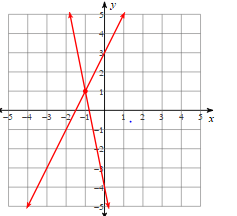
(-1,1)
Solve the systems of equations:
-3x + 4y = -2
y = -5
(-6, -5)
Solve the systems of equations:
14x + 2y = 26
-14x - 6y = -50
(1, 6)
What is the "answer" to a systems of equation?
and ordered pair, where the two lines intersect (or don't if they are parallel). Any form of this answer is correct. Essentially: the point where two lines cross
How many solutions are there?
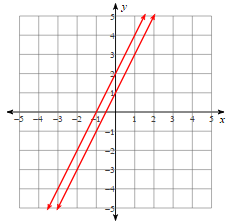
No Solutions
Solve the systems of equations:
-5x - 5y = 10
y = -4x -17
(-5, 3)
Solve the systems of equations:
-3x - 5y = 2
3x + 5y = 7
No Solution
What are the three ways to solve a system of equations?
graphing, substitution, or elimination
Solve Using Graphing:
y = 5/3x + 2
y = -3
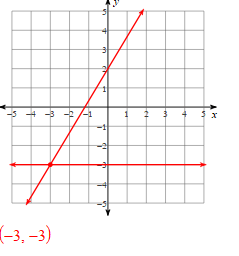
Solve the systems of equations:
y = -2x - 9
3x -6y = 9
(-3, -3)
Solve the systems of equations:
-6x - 10y = 4
6x + 10y = 0
No Solution
What does it mean when you get an answer such as 0=2, or no solution?
It means the lines are parallel. Since they never intersect there are no solutions to the system.
How many solutions are there?
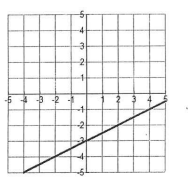
Infinitely Many Solutions
Solve the systems of equations:
-8x - 5y = -24
-x + y = 10
(-2, 8)
Solve the systems of equations:
-3x - 24y = -66
3x + 4y = -14
(-10, 4)
What does it mean when a solution to a system of equation is a true statement, such as 7=7, or infinite solutions?
These are the same exact line, therefore they have
Infinite Solutions since every point on the line satisfies both equations.
Solve the systems of linear equations by graphing:

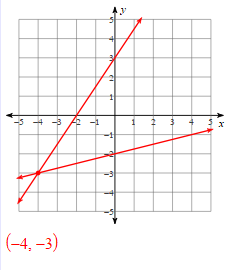
Solve the systems of equations:
-8x + y = -7
16x - 2y = 14
Infinitely Many Solutions
Solve the systems of equations:
-15x + 6y = -36
8x - 6y = 22
(2, -1)
How you tell if the following equations have one, no, or infinite solutions without solving the system?
y = -5x -12
y = 1/2 x + 3
If the lines have different slopes, then the lines intersect. Therefore, there is only one Solution.